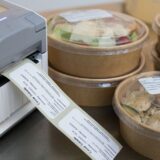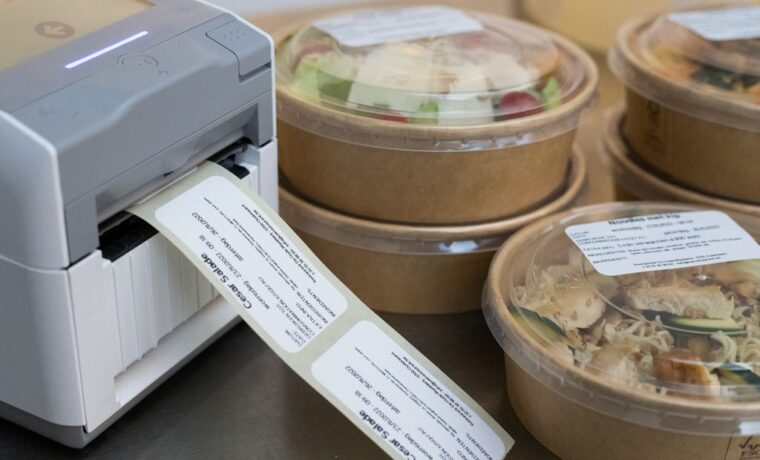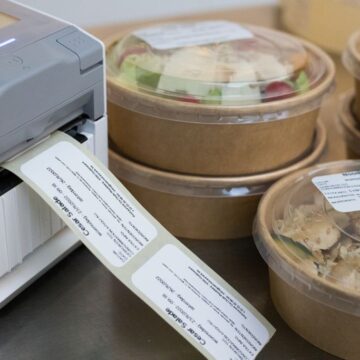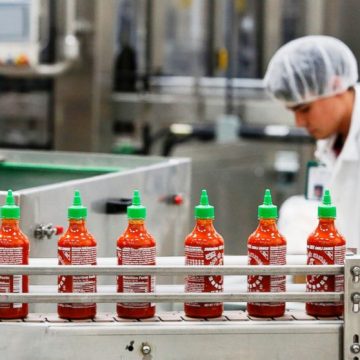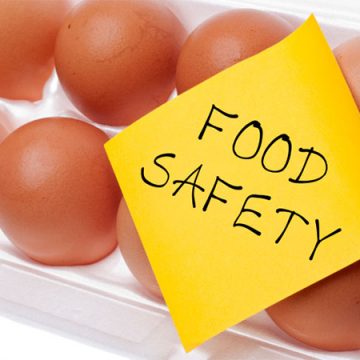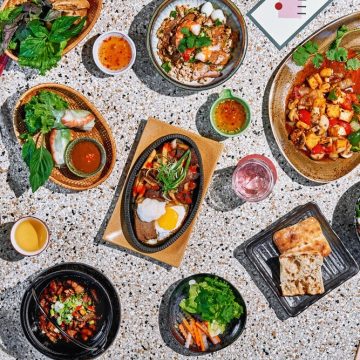Why You Need a Food Label Printer
Food label printers are an essential tool for any food-related business. Whether you run a restaurant, bakery, or food manufacturing company, having a reliable food label printer can make a significant impact on your branding, compliance with regulations, and overall efficiency and productivity.
Elevate Your Branding
In the competitive food industry, branding is crucial. Your food labels not only provide vital information about your products but also play a significant role in shaping your brand image. With a food label printer, you have complete control over the design, layout, and quality of your labels.
You can incorporate your logo, use vibrant colors, and create visually appealing labels that catch the attention of your target audience. A food label printer allows you to showcase the unique aspects of your products and differentiate yourself from competitors.
Ensure Compliance with Regulations
Food labeling regulations vary from country to country and even between states or regions. It can be challenging to keep up with the ever-changing requirements and ensure that your labels comply with the law.
A food label printer equipped with the necessary tools and software can simplify this process. It can automatically generate labels that meet the specific regulations for your products, such as ingredient lists, allergen warnings, nutrition facts, and traceability information.
By using a food label printer, you can avoid costly mistakes and potential legal issues that may arise from non-compliant labeling.
Improve Efficiency and Productivity
Handwriting or manually printing food labels can be time-consuming and prone to errors. In a fast-paced food business, every minute counts.
A food label printer can significantly improve your efficiency and productivity. With the ability to print labels in seconds, you can save valuable time and allocate your resources to more critical tasks. Additionally, the automation provided by food label printers eliminates human errors, such as illegible handwriting or incorrect information.
By streamlining your labeling process, you can improve your overall operations and meet the demands of your customers more effectively.
Factors to Consider When Choosing a Food Label Printer
Choosing the right food label printer for your business is essential to ensure optimal performance and meet your specific requirements. Here are some key factors to consider:
Printing Technology: Thermal or Inkjet?
When it comes to food label printing, two primary printing technologies dominate the market: thermal and inkjet. Each has its pros and cons, and the right choice depends on your specific needs.
Thermal printers use heat to create an image on the label. They are known for fast printing speeds, high-quality prints, and durability. Thermal printers are ideal for businesses that require high-volume label printing or need labels to withstand harsh environments, such as cold storage.
Inkjet printers, on the other hand, use liquid ink to create the image. They offer vivid colors and the ability to print complex graphics and fine details. Inkjet printers are suitable for businesses that prioritize label customization and high-resolution prints, such as gourmet food producers or artisanal products.
Consider your specific printing needs, budget, and desired print quality when choosing between thermal and inkjet printers.
Printing Speed and Resolution
The printing speed and resolution are crucial considerations, especially for businesses with high printing volumes.
If your business requires rapid label printing to keep up with production demands, look for a food label printer with high printing speed. This ensures that you can meet deadlines and maintain smooth operations.
Resolution refers to the clarity and sharpness of the prints. For labels with intricate designs or small fonts, a higher resolution is essential to ensure legibility. Consider the required resolution for your labels and choose a printer that can meet those requirements.
Label Size and Variety
Consider the sizes and types of labels you need for your products. Some food label printers are designed to handle specific label sizes, while others offer more flexibility.
If you have a diverse product lineup with varying label sizes, look for a printer that can accommodate different label widths and lengths. Additionally, consider any special label requirements, such as adhesive types or materials, and ensure that the printer you choose can handle them.
Top Features to Look for in a Food Label Printer
When selecting a food label printer, it’s essential to keep in mind the specific features that can enhance your user experience and overall satisfaction with the product. Here are some top features to consider:
Easy-to-Use Software and User Interface
Look for a food label printer that comes with user-friendly software and a straightforward user interface. The software should allow you to design labels easily, import data from spreadsheets or databases, and make quick edits when necessary.
An intuitive user interface ensures that you can navigate the printer settings effortlessly and troubleshoot any issues that may arise during printing.
Wireless Connectivity Options
Wireless connectivity is becoming increasingly important in today’s digital age. Look for a food label printer that supports wireless connectivity options, such as Wi-Fi or Bluetooth.
Wireless connectivity allows you to print labels from multiple devices without the need for direct cable connections. This flexibility can improve your productivity and streamline your labeling process.
Durable and High-Quality Prints
Choose a food label printer that not only delivers high-quality prints but also offers durability.
Labels may undergo various environmental conditions, such as temperature changes or exposure to moisture. A printer that can withstand these conditions ensures that your labels remain legible and intact throughout their lifespan.
Comparing Food Label Printer Brands
When it comes to food label printer brands, there are several options available in the market. Here is a comparison of two popular brands:
Epson vs. Zebra: Which is the Right Choice for You?
Epson and Zebra are renowned brands in the label printing industry, each with its strengths and target markets.
Epson printers are known for their exceptional print quality and versatility. They offer a wide range of printing options, including both thermal and inkjet technologies. Epson printers are a popular choice for businesses that require high-resolution prints or customized labels.
Zebra, on the other hand, specializes in thermal printing technology. They are known for their ruggedness, reliability, and high-speed printing. Zebra printers are often the preferred choice for businesses that require fast label printing in high volumes, such as warehouses or distribution centers.
Consider your specific requirements and printing needs when comparing Epson and Zebra printers to determine which brand is the right choice for your business.
Dymo vs. Brother: Which One Offers Better Value for Money?
Dymo and Brother are well-known brands that offer affordable and reliable food label printers.
Dymo printers are compact and easy to use, making them suitable for small businesses or individuals who require occasional label printing. They offer a range of label sizes and types and come with user-friendly software.
Brother printers, on the other hand, offer a balance between affordability and performance. They are known for their durability and versatility, with options for both thermal and inkjet printing. Brother printers often come with advanced software features and connectivity options.
Consider your budget, specific printing needs, and desired features when comparing Dymo and Brother printers to determine which brand offers better value for money.
Industrial vs. Desktop Printers: Which Type Suits Your Business Needs?
When choosing a food label printer, you must also consider the type of printer that suits your business needs.
Industrial printers are designed for high-volume label printing and are capable of handling demanding environments. They offer faster printing speeds, more durable construction, and higher paper capacity. Industrial printers are suitable for businesses with large-scale operations or those that require labels to withstand challenging conditions.
Desktop printers, on the other hand, are more compact and affordable. They are suitable for small to medium-sized businesses with lower printing volumes. Desktop printers offer flexibility and ease of use, making them an excellent choice for businesses with diverse product lines or frequent label changes.
Consider the scale of your operations, budget, and printing requirements when deciding between industrial and desktop printers.
FAQ
Question: Why do food-related businesses need a food label printer? – Food label printers are essential for food-related businesses to improve branding, compliance, efficiency, and productivity. They allow for complete control over design, layout, and quality, enabling branding customization and differentiation from competitors. Food label printers also ensure compliance with regulations, avoiding legal issues and costly mistakes. Moreover, they save time and reduce errors, improving efficiency and productivity in a fast-paced food business.
Question: What are the benefits of using a food label printer for branding? – With a food label printer, businesses have complete control over the design, layout, and quality of their labels. They can incorporate their logo, use vibrant colors, and create visually appealing labels that catch the attention of their target audience. Food label printers allow businesses to showcase the unique aspects of their products and differentiate themselves from competitors, ultimately elevating their branding efforts.
Question: How can a food label printer ensure compliance with regulations? – Food labeling regulations vary from country to country and even between states or regions, which can be challenging to keep up with. A food label printer equipped with the necessary tools and software can simplify this process. It can automatically generate labels that meet the specific regulations for products, such as ingredient lists, allergen warnings, nutrition facts, and traceability information. Using a food label printer helps businesses avoid costly mistakes and potential legal issues that may arise from non-compliant labeling.
Question: How do food label printers improve efficiency and productivity? – Handwriting or manually printing food labels can be time-consuming and prone to errors. In a fast-paced food business, every minute counts. A food label printer can significantly improve efficiency and productivity by printing labels in seconds, saving valuable time. The automation provided by food label printers eliminates human errors, such as illegible handwriting or incorrect information. By streamlining the labeling process, businesses can improve overall operations and meet customer demands more effectively.
Question: What factors should be considered when choosing a food label printer? – When choosing a food label printer, it’s essential to consider factors such as printing technology (thermal or inkjet), printing speed and resolution, and label size and variety. Each of these factors can impact the performance and suitability of the printer for specific business needs and requirements.
Question: What are some top features to look for in a food label printer? – Some top features to consider when selecting a food label printer include easy-to-use software and a user interface, wireless connectivity options, and durability. User-friendly software and a straightforward user interface make it easier to design labels, import data, and make quick edits. Wireless connectivity options, such as Wi-Fi or Bluetooth, provide flexibility in printing labels from multiple devices. Durability ensures that labels remain legible and intact throughout their lifespan.
Question: Which brands are notable in the food label printer market? – Epson, Zebra, Dymo, and Brother are popular brands in the food label printer market. Epson printers offer exceptional print quality and versatility, while Zebra specializes in thermal printing for high-speed volume printing. Dymo printers are compact and budget-friendly, while Brother printers offer a balance between affordability and performance. Each brand has its strengths and target markets, so it’s important to consider specific requirements and printing needs when choosing a brand.
Question: How do industrial and desktop printers differ in terms of business suitability? – Industrial printers are designed for high-volume label printing and are capable of handling demanding environments. They offer faster printing speeds, more durable construction, and higher paper capacity, making them suitable for businesses with large-scale operations or labels that need to withstand challenging conditions. Desktop printers, on the other hand, are more compact and affordable, making them suitable for small to medium-sized businesses with lower printing volumes and frequent label changes. Consider the scale of operations, budget, and printing requirements when deciding between industrial and desktop printers.
Useful Resources:
- Epson – Explore Epson printers known for exceptional print quality and versatility.
- Zebra – Discover Zebra printers specializing in thermal printing for high-speed volume printing.
- Dymo – Find compact and budget-friendly Dymo printers.
- Brother – Browse Brother printers that offer a balance between affordability and performance.
- FDA – Access the Food and Drug Administration website for regulatory information on food labeling.
- ISO – Visit the International Organization for Standardization to learn about international food labeling standards.
- GS1 – Explore GS1, a global standard organization that provides guidance on product labeling and barcoding.
- Food Standards Agency – Learn about food labeling regulations in the United Kingdom.
